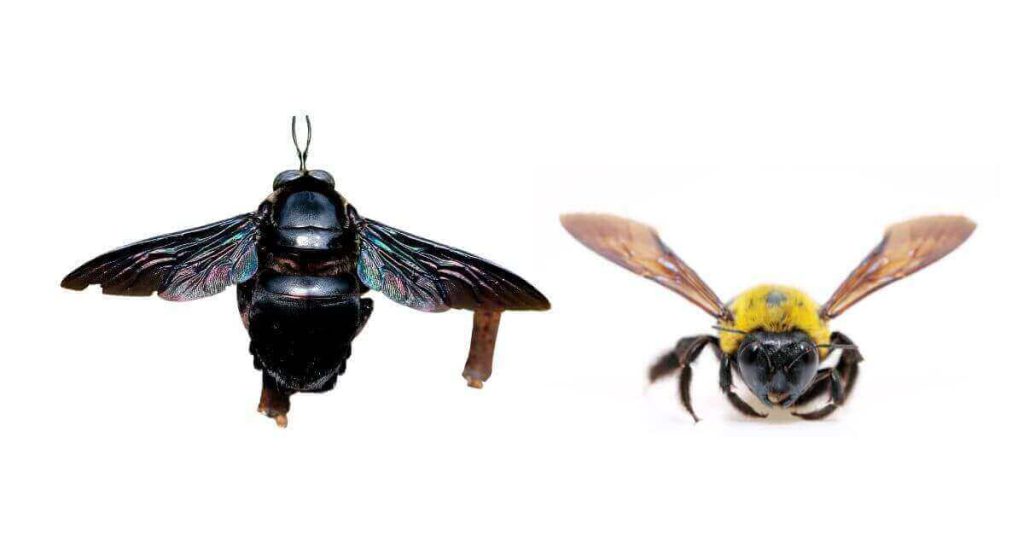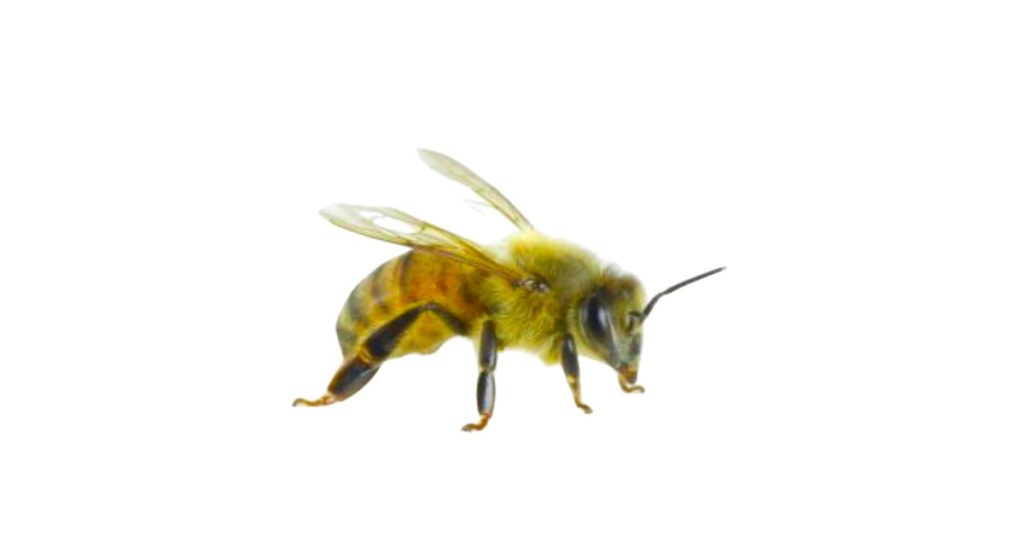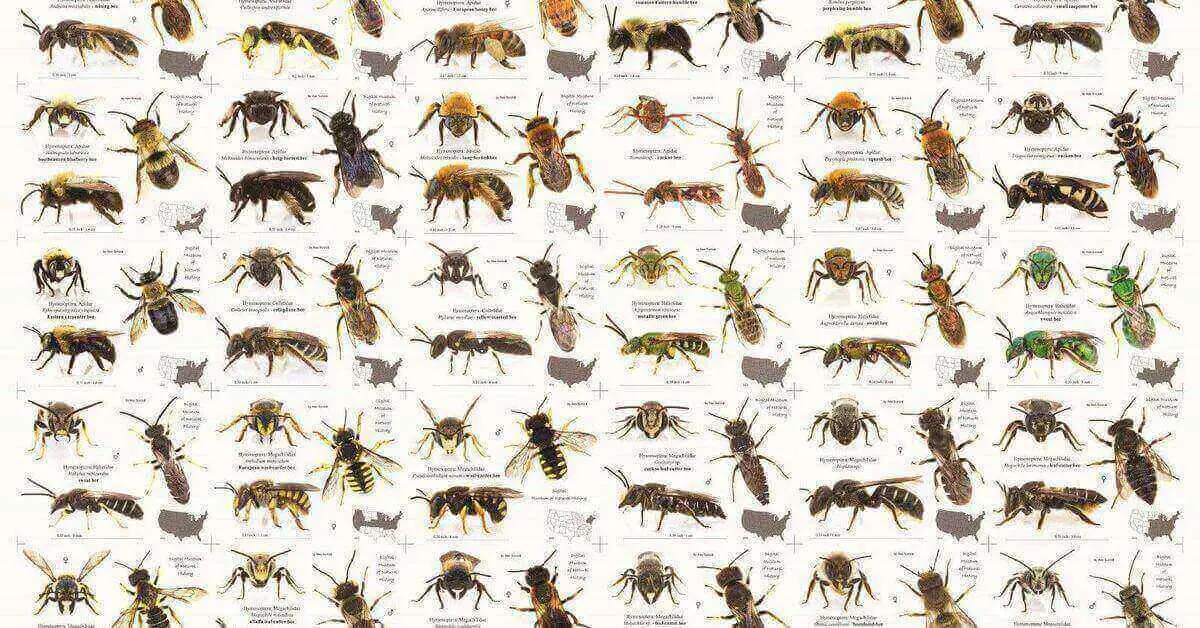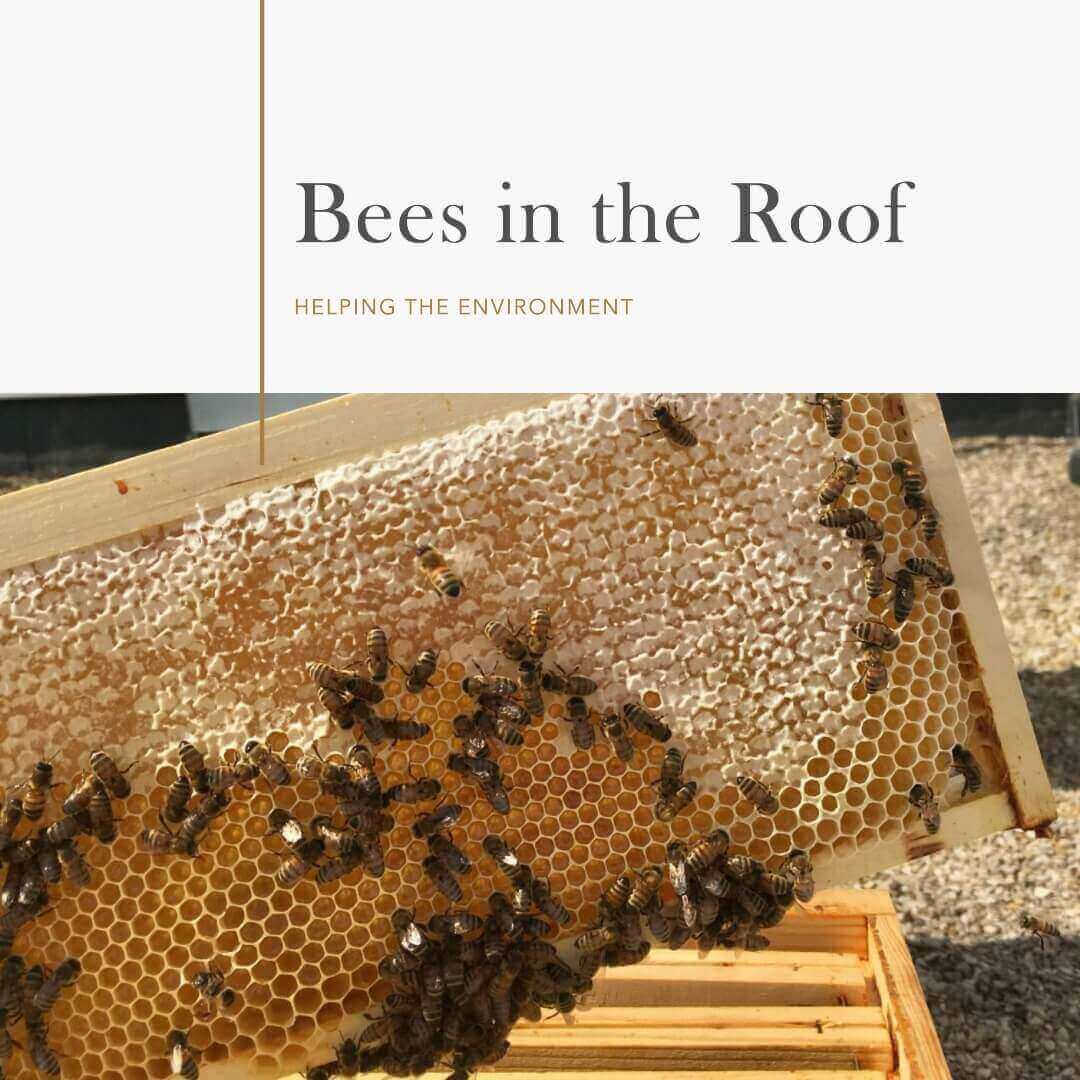There are 25,000 bee species present worldwide. Scientists have found 2000 species of Honey Bees in Australia. Almost every country in the world has different species of bees. They are known by their size, color, and habits.1500 are native bees that live in Australia. These 2000 bee species contain wasps, honey natives, and all other bees. Solitary bees are most common Bees in Australia and are small in size, more aggressive, and stingy. Bee is the best pollinator bumble bee solitary are social bees which are the best pollinators.
Bees in Australia
Long-horned bees which are found in Australia are carpenter bees. Carpenter bees are black, brown, and yellow. The Australian agriculture department improves crop pollination through bees. The western honey bee is used in Australia for crop pollination, also known as Apis mellifera. Each native bee is important to its region. Some species of Bees in Australia are described in this article.
Black and yellow carpenter bee
Native bees of Australia are known as the great carpenter bee. This bee is large, with a maximum size of 16mm. Great carpenter bees are black with yellow spots.

| Scientific Name | Xylocopa varipuncta |
| Common Name | Black and Yellow Carpenter Bee |
| Family | Apidae |
| Order | Hymenoptera |
| Class | Insecta |
| Phylum | Arthropoda |
| Kingdom | Animalia |
| Habitat | Various habitats, often found in gardens, woodlands, and urban areas with suitable nesting sites. |
| Distribution | Western United States and parts of Mexico |
| Size | Approximately 0.5 to 1 inch in length |
| Coloration | Black body with distinct yellow markings on the thorax and abdomen |
| Behavior | Solitary and non-aggressive, mainly forage for pollen and nectar |
| Nesting Habits | Excavate nesting tunnels in dead wood, especially in trees and wooden structures |
| Pollination Role | Important pollinators for various plants and crops |
| Lifespan | Several months to a year, depending on environmental conditions |
| Interesting Fact | Males can be identified by a patch of white or light-colored hairs on their faces |
Nesting habits
Black carpenter bees build their nests in soft trees such as mango trees. His nests do not look like honey bees and other bees. Honey bees and other bees build their nests in large sizes, but The carpenter bee nest size is small, which is not so wide. Carpenter bees like hot climates; they live in northern Australia.
Do black carpenter bees stingy?
Yes, female black carpenter bees are aggressive-only female black carpenter bees sting when feeling danger. The male black carpenter bee is not a stinger.
What do carpenter bees look like?
Carpenter bees Shape size and color are look like bumble bees. Only difference which make in carpenter bees are different from bumble is yellow lines these lines do not appear in carpenter bee. You can easliy difference in bumbel and carpenter bees by their shiny color.
Australian Blue-banded bee
Blue-banded bees are the most famous bees in Australia. They are black with blue lines on his body which introduce the name blue banded. This bee is medium in size, which is the native bee of Australia. Every bee species performs pollination, but blue-banded bee pollination is different from others, called buzz pollination. This pollination is valuable for farmers because this pollination is used in the production of tomatoes, chilies, and eggplant.

Blue-banded bees are faster than other bees in pollen and nectar collecting range. According to the University of Nevada, the United States, 8% of world plants need buzz pollination for reproducing.
| Scientific Name | Xylocopa varipuncta |
| Common Name | Black and Yellow Carpenter Bee |
| Family | Apidae |
| Order | Hymenoptera |
| Class | Insecta |
| Phylum | Arthropoda |
| Kingdom | Animalia |
| Habitat | Various habitats, often found in gardens, woodlands, and urban areas with suitable nesting sites. |
| Distribution | Western United States and parts of Mexico |
| Size | Approximately 0.5 to 1 inch in length |
| Coloration | Black body with distinct yellow markings on the thorax and abdomen |
| Behavior | Solitary and non-aggressive, mainly forage for pollen and nectar |
| Nesting Habits | Excavate nesting tunnels in dead wood, especially in trees and wooden structures |
| Pollination Role | Important pollinators for various plants and crops |
| Lifespan | Several months to a year, depending on environmental conditions |
| Interesting Fact | Males can be identified by a patch of white or light-colored hairs on their faces |
Nesting habits
Blue-banded bees are native bees of Australia, so they are found all over Australia. Males and females have different nesting habits. Female blue-banded bees build their nests in the ground. Males live in the same nests created by worker bees. Usually, they build their nests in urban areas.
Do blue banded bees are aggressive?
Blue-banded bees are stingy, but blue-banded bees are not aggressive; they are not dangerous to humans.
Do blue-banded bees produce honey?
Blue-banded bees have all habits of honey-producing bees, but blue-banded bees cannot produce honey. They collect pollen and nectars but do not make honey. Honey making Bees.
| Scientific name | Amegilla cingulata |
| Kingdom | Animalia |
| Size | 11mm to 13mm |
| Order | Hymenoptera |
| Class | Amegilla |
Australian Hmalistus bee
Hmalistus bees are orange and black. This kind of bee is small in size (8mm) They are found in Australia, Sri Lanka, and South Asia. Hmalistus bees collect pollen and nectar by using their hind legs. When bees collect pollen, it will be stored in a pollen basket.
Nesting habits
Hmalistus bees create their nests in the ground. Females create their nests away from male bees and lay eggs. Female bees live alone without male bees, not for a lifetime. Many female bees live in single nests for laying eggs.
| Scientific name | Homalistus |
| Kingdom | Animalia |
| Class | Insecta |
| Order | Hymenoptera |
| Size | 8mm to 9mm |
| Family | Halictidae |
| Genius | Homalistus |
| Phylum | Arthropoda |
Italian bee
Italian honey bees are found in Australia and North America. The color of the Italian bee is mostly black and brown. Italian bee size is medium. They are a little smaller and larger. Most beekeepers like to work with Italian honey bees because this type of bee is easy to handle. I also like the Italian bee because of its habits. Italian bees produce honey; it is a social bee. They create large colonies for living.

Italian bees create their nests on trees; these bees live in hives.
Do Italian bees are aggressive?
Italian bees cannot sting in winter. Scientists discovered that Italian bees sting in spring. It means that Italian bees are less stingy. This kind of bee is not dangerous for humans.
Australian Masked bee
The last bee in this article is the masked bee, another name collide. Black color bees with long wings are present in Australia and worldwide. Female masked bees have black faces, but male masked bee faces are covered with yellow color. The masked bee has no hair on its body; only its legs have hair used for collecting nectars. Masked bees are no longer but longer than Hmalistus bees. Masked bees are Australian native bees.

Nesting habits in Australia
Like hmalistus bees, masked bees build nests in woods and trees. These bees live in forests and urban areas. If you like to see masked bees, you can find them in flowering areas. Males and females differ by their facial color. Do masked bees produce honey? No masked bee cannot produce honey. Are masked bee stings? Mask bees are stingy, but their sting is not dangerous for our bodies. They are aggressive when you disturb them.
Native Bees of Australia
- Western honey bee
- Stainless bee
- Carpenter bee
- Honey bee
These bees are the native bees of Australia, and those bees are described in this article. Some native bees are solitary. Solitary bees are those bees that cannot have queen bees and workers. These bees cannot live in groups and hives. You can easily differentiate between solitary bees and honey bees by their habits. Honey bees live in hives and produce honey, but native bees cannot do this job.
Who are native bees? Native bees are the bees that live in your area.
Summary
Out of 25000 bee species, 2000 bee species are present in Australia. Some bees produce honey, and some cannot produce honey. Out of 2000 Australian bees, 1600 are Australian native bees that live in Australia. I hope you will be know everything about bees in Australia after reading this article.




